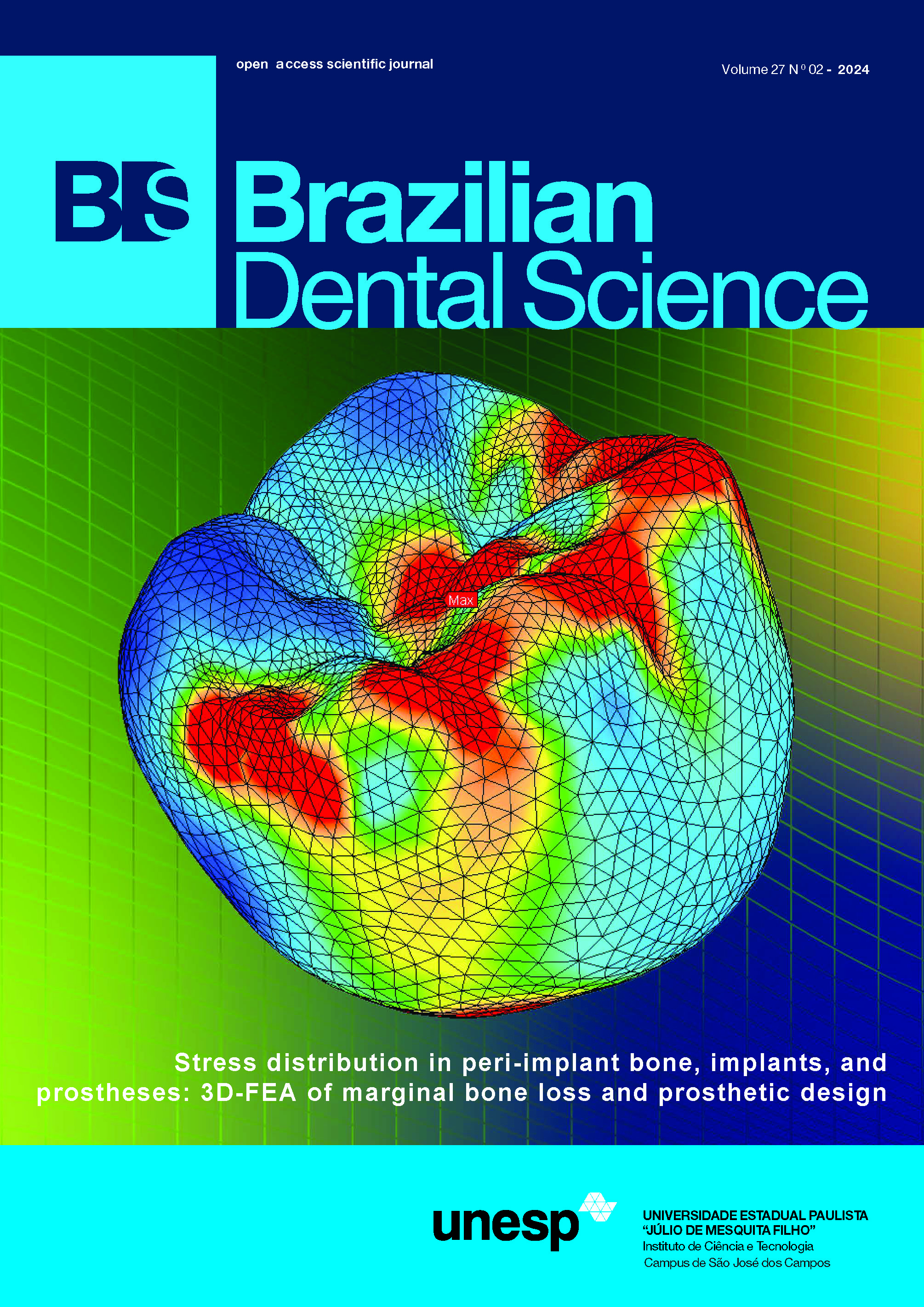Poly ether keton keton polymer deposition on laser surface structured commercial pure titanium using magnetron sputtering
DOI:
https://doi.org/10.4322/bds.2024.e4234Abstract
Objective: This study aimed to evaluate the effect of coating titanium (Ti) dental implant with polyether ketone ketone (PEKK) polymer using magnetron sputtering on osseointegration, trying to overcome some of the problems associated with Ti alloys. Material and Methods: Implants were prepared from grade (II) commercially pure titanium (CP Ti), then laser was used to induce roughness on the surface of Ti. PEKK was deposited on the surface of Ti implants by radiofrequency (RF) magnetron sputtering technique. The implants were divided in to three groups: without coating (Ls), with PEKK coating using argon (Ar) as sputtering gas (Ls-PEKK-Ar), and with PEKK coating using nitrogen (N) as sputtering gas (Ls-PEKK-N). All the implants were implanted in the femoral bones of rabbits. After three different healing periods (2, 6, and 12 weeks) the rabbits were sacrificed for a mechanical examination (removal torque) and for histological examination. Results: The results revealed a significant increase in the removal torque mean values when using PEKK coating on Ti implants, with the highest value recorded by Ls-PEKK-N group. Histologically, the study demonstrated the progression of osteogenesis during all the research periods. It was observed that the Ls-PEKK-N group had the highest percentage of new bone formation in all healing periods. Conclusion: The use of PEKK as coating material on the surface of Ti implants by RF- magnetron sputtering results in an increase in the torque required to remove implants and enhance bony tissue formation around the implants especially when using nitrogen as a sputtering gas.
KEYWORDS
Dental implant; Magnetron sputtering; Osseointegration; PEKK; Titanium.
Downloads
Published
How to Cite
Issue
Section
License
Brazilian Dental Science uses the Creative Commons (CC-BY 4.0) license, thus preserving the integrity of articles in an open access environment. The journal allows the author to retain publishing rights without restrictions.
=================




























